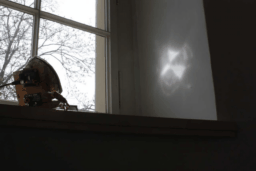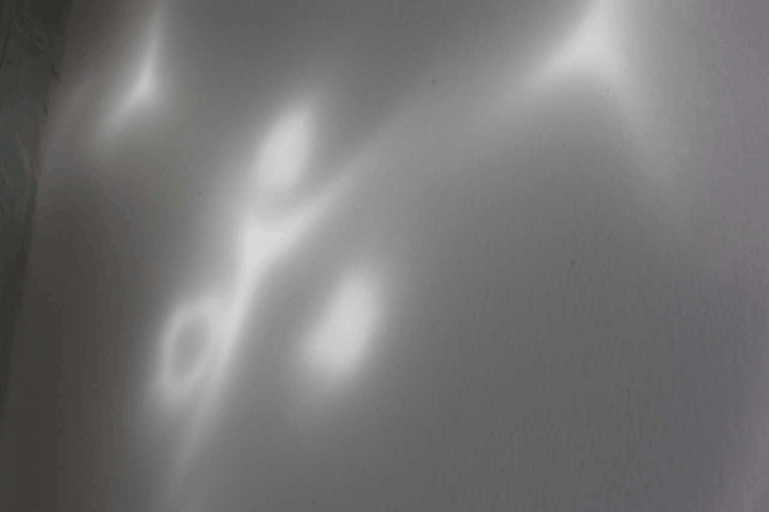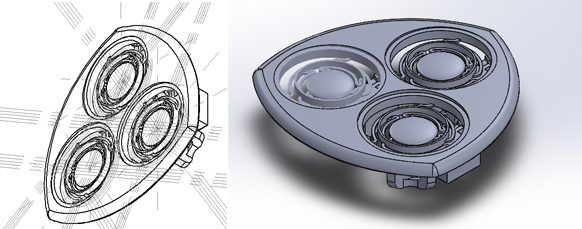Liquid Ornament
Depictions with sun-light


This project explores alternate projection and imaging mechanisms that donít rely on luminous sources, such as screens or LEDs. We investigated how sunlight can be used along a continuum ranging from non-informational aesthetic lighting to simple controlled reflections of sunlight that provide enough information to depict legible content. Rethinking the pixel as a reflection exposed challenges in mechanics, material and ease of control. We found that slow, precise movements work best. The threshold between pixel and non-pixel provides great potential to add additional aesthetics to a depiction based on sunlight, by transitioning between atmospheric ambient lighting and information representation. Our exploration of depictions without traditional information-rich content provides an alternative to think about ambient, calm and public displays.

The Concept

In a series of experiments we explored mechanisms to affect the reflective properties of materials via deformation. Deformation affects surface finish, as it can scatter light and thus results in different types of reflections. Searching for non-rigid materials that withstand bending and deformation, we found space blankets, a thin PET film coated with a metallic reflecting agent (aluminum), usually in gold or silver, which reflects up to 97-99% of light. It has high tensile strength, dimensional stability and low gas permeability, can be stretched, folded and put under pressure. Spread flat, the material creates direct and diffuse reflections. Tiny crinkles result in effects similar to reflections on water. Space blankets seemed ideal for experiments, being cheap, and having suitable optical and mechanical properties.
Version 4

Version 5
"Pixel or not to pixel?", that is the question. In our first experiments, a surface deformation with a continuous shape shift was combined with the idea of the pixel. Three shape shifter formed so to say three pixels, making one module. In Version 4, the continuety of the surface deformation was not perceivable in the resulting reflection anymore. The mechanism of the pixel was merely used for an on/off effect now. The ephemeral whir and beauty of the filigree stroke of light reflection was gone. Time to step back and rethink what is important for forming light refelctions.
References:
Patrick Tobias Fischer, Eva Hornecker, Johann Gielen, Johannes Hartmann, Marco Schmandt, Anna Rack, Marie Bornemann, Felix Dondera and Herbert Grinda. Exploring the Potential of Depictions with Sun Reflections. Proc. of Pervasive Displays 2015 (PerDis'15), ACM 2015, pp. 217-224.
Team:
Patrick Tobias Fischer
Johann Gielen (Lighting Designer)
